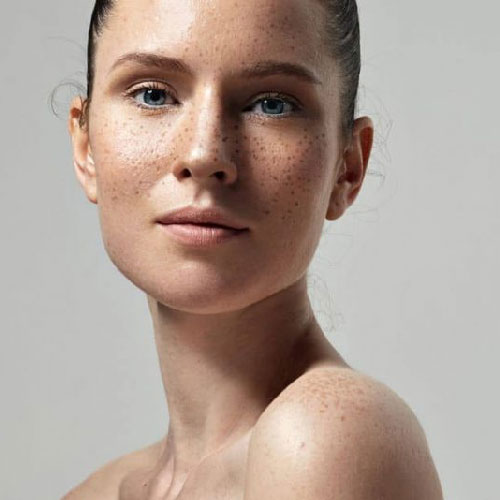Photodynamic Therapy
Has your skin experienced damage from excessive sun exposure? If so, you likely are suffering from some level of photodamage—a type of skin damage characterized by changes in pigmentation, fine lines and wrinkles, as well as a rougher skin texture. Photo damage is also responsible for the appearance of precancerous lesions, referred to as actinic keratoses. These lesions, if not properly treated can turn into squamous cell skin cancers. The New York City dermatologists at NY Skin RX can correct mild to moderate levels of photodamage as well as eliminate these pre cancerous growths through the use of photodynamic therapy.
How does photodynamic therapy work?

Also referred to as PDT, photodynamic therapy uses a specific wavelength of blue light to treat areas of damage. A photosensitizing chemical is applied to the skin for approximately one to 3 hours before the light therapy takes place. This solution makes the targeted skin cells more sensitive to light. During exposure to blue light, you may feel slight discomfort or burning that we can address with use of fans. Typically, patients find the procedure very tolerable. Immediately after treatment, one may experience redness and peeling that may last for up to one week. Patients typically need 1-3 treatments depending on their degree of sun damage. After undergoing PDT, your skin will look clearer, healthier and smoother.
Is photodynamic therapy right for me?
PDT is a great choice for patients who have a significant amount of sun damage, including the presence of actinic keratoses. Undergoing a course of photodynamic therapy can prevent skin cancer in these individuals.
Other skin conditions that respond well to PDT include acne and inflammatory rosacea. PDT can help shrink the oil glands and kill the bacteria involved in acne. Several treatments are recommended every 3-4 weeks. This is a great treatment for those with cystic acne or inflammatory rosacea that may not want to take systemic medications including antibiotics and Accutane. NY Skin RX will not use photodynamic therapy on women who are pregnant or patients that currently are taking Accutane.
Why should I consider photodynamic therapy?
The Food and Drug Administration has approved the use of PDT to treat actinic keratosis, which is considered to be a precancerous condition. PDT has a success rate of more than 80 percent in treating actinic keratosis, following one to two treatments, scheduled a month apart. Follow-up treatments are advised on an annual basis to maintain protection against actinic keratosis and the threat of skin cancer.
Are there any risks or side effects associated with PDT?
You may experience redness and scaly skin following a photodynamic treatment, comparable to having a sunburn. You should avoid any significant sun exposure for at least a week after a PDT procedure, as this can cause significant burning discomfort in the area that was treated.
After undergoing a PDT procedure, you should apply sunscreen right away and make sure the area remains covered at all times with clothing, hats, or scarves for a minimum of 48 hours. Even brief exposure to sunlight during this initial period can cause problems. If you experience any peeling after PDT, you can resume your normal skin care routine once the peeling has stopped.
Photodynamic Therapy in New York City
Everyone is exposed to the sun’s rays, and while wearing sunscreen is an effective way to prevent sun damage and skin cancer, not everyone wears it as they should. One in five Americans will develop some form of skin cancer by the age of 70. Allow Manhattan board-certified dermatologists at NY Skin RX, Drs. Debra Wattenberg Ilyse Lefkowicz and Jamie Manning, to reverse your skin damage, and help keep skin cancer from starting by receiving photodynamic therapy. To learn more about photodynamic therapy and how it could benefit you, give us a call at (212) 288-3200 to schedule a consultation.
NY Skin RX provides state-of-the-art cosmetic and medical dermatology services to patients in Manhattan, the Upper East Side, and throughout New York City.
